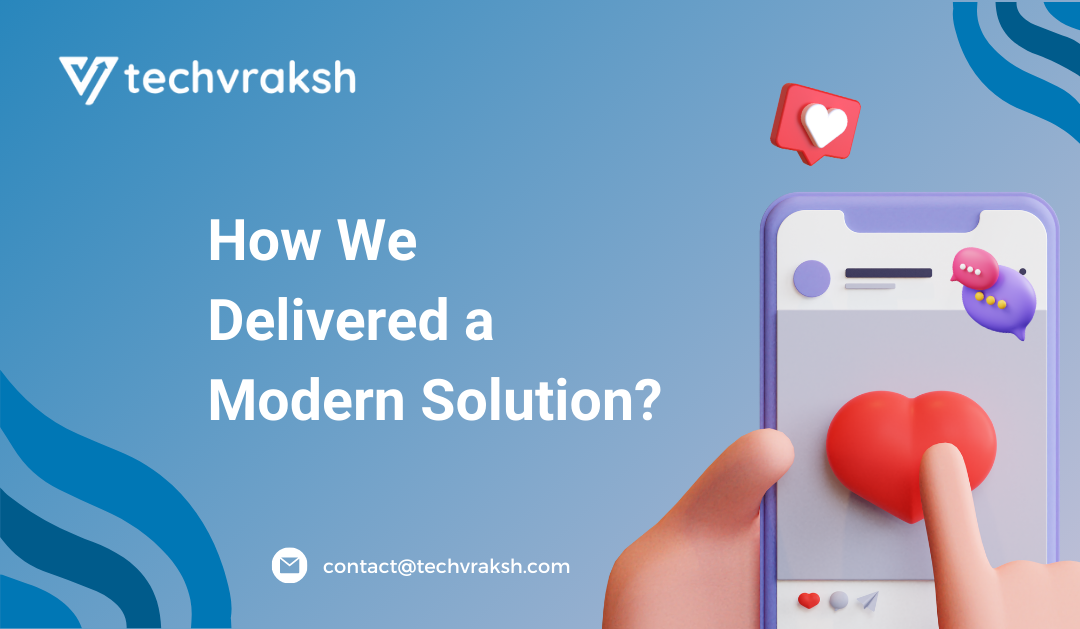Client Background:
Our client, a mid-sized enterprise in the healthcare industry, relied heavily on a legacy application that managed patient records and scheduling. While the application had served them well for over a decade, it suffered from outdated technology, poor user experience, and limited scalability. The client sought to modernize this application to improve efficiency, enhance user satisfaction, and support future growth.
Challenges:
- Outdated Technology Stack: The existing app was built on a monolithic architecture using outdated frameworks, making it difficult to integrate with newer systems and technologies.
- User Experience Issues: The user interface was not intuitive, leading to frequent user errors and inefficiencies. Staff training was required regularly, increasing operational costs.
- Scalability Concerns: As the client’s patient base grew, the legacy system struggled to handle increased demand, resulting in slow performance and occasional downtimes.
- Compliance and Security Risks: The legacy app was not compliant with modern healthcare regulations, raising concerns about data security and patient confidentiality.
Our Approach:
1. Discovery and Requirement Analysis:
We initiated the project with a comprehensive discovery phase, engaging stakeholders through interviews and workshops. This helped us understand the core functionalities of the legacy app and identify pain points. We documented user requirements and defined the key features for the new application.
2. Prototyping and User Testing:
To ensure alignment with user expectations, we created high-fidelity prototypes of the new application. Through iterative user testing, we gathered feedback that guided design improvements, resulting in an intuitive, user-friendly interface.
3. Choosing the Right Architecture:
We recommended transitioning from a monolithic architecture to a microservices architecture. This allowed us to develop individual components independently, enhancing scalability and maintainability. Each microservice was built using modern frameworks, ensuring better performance and easier integration with third-party systems.
4. Development and Integration:
The development team followed agile methodologies, allowing for rapid iterations and continuous feedback. We implemented a robust API layer to facilitate communication between microservices and legacy systems during the transition phase, ensuring minimal disruption to ongoing operations.
5. Security and Compliance:
We prioritized security by implementing industry-standard encryption and authentication protocols. Regular audits were conducted to ensure compliance with healthcare regulations, safeguarding patient data and building trust with users.
6. Training and Support:
Post-launch, we provided comprehensive training sessions for the staff to familiarize them with the new system. Additionally, we established a support framework to address any issues and gather user feedback for future improvements.
Results:
- Enhanced User Experience: The new application boasted a modern, intuitive interface that significantly reduced user errors and training time. Feedback from users indicated a 40% increase in satisfaction rates.
- Improved Performance and Scalability: By adopting a microservices architecture, the application could handle three times the previous workload without performance degradation. This scalability prepared the client for future growth.
- Increased Efficiency: The revamped application automated several manual processes, reducing operational costs by approximately 25%. Staff could now focus on patient care rather than administrative tasks.
- Compliance and Security: The new solution met all regulatory requirements, minimizing compliance risks. Enhanced security measures ensured patient data was protected, reinforcing trust among users and stakeholders.
Conclusion:
Revamping the legacy application was a transformative journey for our client, enabling them to modernize their operations and improve patient care. By focusing on user needs, adopting a microservices architecture, and ensuring compliance, we delivered a solution that not only addressed immediate challenges but also positioned the client for future success.
At TechVraksh, we specialize in modernizing legacy systems to help businesses thrive in an increasingly digital landscape. If you’re facing similar challenges, let’s discuss how we can support your transformation journey.

